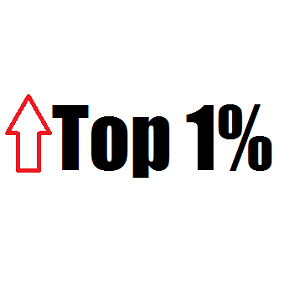The top 1%
Saw some headlines this morning from Oxfam about wealth distribution. The glaring headline was that the top 1% of the world ‘own’ the rest of it.
Deeper analysis though exposed the headline grabbing number as a bit of a ‘back of a fag packet’ calculation. Exposed by the fact that ‘It takes cash and assets worth $68,800 (£48,300) to get into the top 10%, and $760,000 (£533,000) to be in the 1%. That means that if you own an average house in London without a mortgage, you are probably in the 1%.’
Putting aside the detail, the problem with these ‘top 1%’ stats is that there will always be a top 1%. If you eliminate the top 1%, another grouping will become the new top 1%. If you plot a bell curve, you will always get a top 1% of something. Height, litter droppers, average number of children, number of times you pick your nose. It’s a ‘normal’ distribution. I’m not saying wealth shouldn’t be better distributed, but statistics will show you that you generally get unequal distribution. Somebody out there has made a fortune by luck, some have lost a fortune through back luck.
It got me thinking about sport. Wayne Rooney earns more in one week than most people can earn in ten years. Entertainers get highly paid if they can generate revenue and that is aligned in other industries and in other sports. I had a browse and found an ITF report that was quite insightful with regard to the distribution of wealth in Tennis, it’s worth a read. A detailed overview of the key findings from the data analysis can be accessed here. But basically most Tennis players make nothing of note in their careers. Only the very top players make life changing amounts.
The review established that:
- In 2013 there were 8874 male professional players 3896 of whom earned no prize money.
- In 2013 there were 4862 female professional players 2212 of whom earned no prize money.
- Most players on tour lost money after they deducted expenses.
- In 2013 total men’s prize money was approximately $162m. An even distribution would provide every male player that earned prize money with $32,638.
- In that year the top 1% of male players (top 50) won 60% ($97,448,106), which reduced the even distribution average down to $13,195.
- In 2013 total women’s prize money was approximately $120m. An even distribution would provide every female player that earned prize money with $45,205.
- In that year the top 1% of female players [top 26] won 51% ($60,585,592) of total prize money, which reduced the even distribution average down to $22,564.
- The break even point on the earnings list (i.e. the point where average costs met actual earnings) was 336 for men and 253 for women in 2013.
- While numbers of players entering the professional game has risen since 2001, the numbers moving from juniors to top 100 has remained constant.
- The time taken from earning the first ranking point to entering the top 100 from 2000 to 2013 is slowly increasing [3.7 years to 4.8 years for men / 3.4 years to 4.1 years for women].
Interesting stuff!

![]()
Category: General





